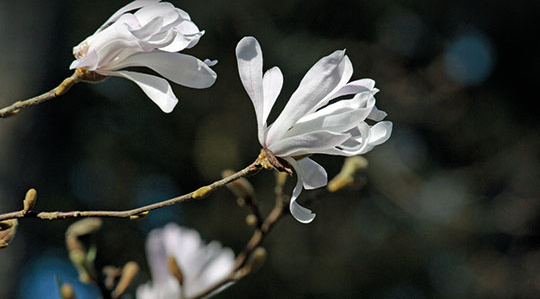Spring tree highlights
Our Dendrologist, Dan Crowley, is a member of the IUCN Global Tree Specialist Group and is working with colleagues at Botanic Gardens Conservation International (BGCI) to assess the worlds maple (Acer) species for the IUCN Red List of Threatened Species.
Here Dan picks out a few of the trees from ‘The little book of disappearing trees' that have been assessed as threatened.
Of the 20,000 or so tree species that have so far been assessed for their extinction risk, almost half of these are considered to be threatened with extinction. Collections such as Westonbirt play an important role in conserving threatened tree species, providing something of a safe haven while enabling us to learn more about them. Paradoxically, many plants that are threatened in the wild are common in gardens, though a great number of them are barely or not at all represented. At a time of global change, the conservation role of botanic gardens is of ever increasing importance.

A species notable for its spring colour is the Chinese tulip tree, Liriodendron chinense. Its narrow-waisted leaves unfold shades of purple having emerged from their duck bill like buds. We have wild sourced specimens from China and Vietnam, where it flowers somewhat earlier than it does in the UK, which tends to be in early summer.
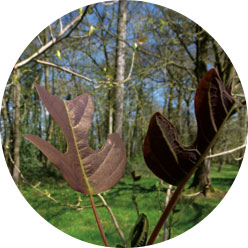
Chinese tulip – A member of the magnolia family, Magnoliaceae, the Liriodendron genus is one that is represented by living examples native to both eastern North America and east Asia; a common occurrence in the plant world.

Katsura, Cercidiphyllum japonicum, is always highlighted in autumn but it is more than worthy of a mention in spring too. Its leaves flush shades of orange and pink, before turning green, and those with a keen sense of smell can catch a whiff of the scent of burnt sugar at this time of year that it is more famous for in autumn. Among our specimens is the UK Champion for height, though its stature pales in comparison to those in parts of its native range of China and Japan.
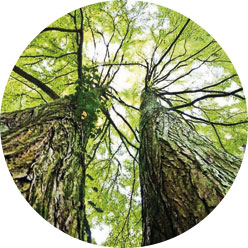
Katsura – In recent years we have planted many more examples of the species, collected from the wilds of Japan. This will ensure that we continue to grow these signature plants into the future.

Our specimens of the sapphire dragon tree, Paulownia kawakamii, derive from a seed collection made by colleagues at Kew from the only known wild population in Taiwan in 1992. At that time, there were believed to be less than 13 trees left in the wild. It is quite likely that these no longer exist. This single seed collection is represented by plants at a number of botanical gardens, though further genetic diversity is unfortunately not. Like other Paulownia species the tree has great ornamental qualities and our older plant, growing in the Old Arboretum, flowered for the first time last year. Needless to say we’ll be keeping a close eye on it again this spring!
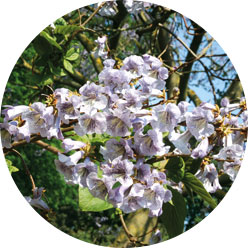
Foxglove trees – Paulownia species are also known as foxglove trees, due to their flowers resembling those of the herbaceous foxglove, Digitalis purpurea, which can also be found at Westonbirt in spring!

Spring is certainly about scents as well as sights and it is not just flowers that smell good. The foliage of members of the walnut family, Juglandaceae, are aromatic, particularly so on their new growth. The northern Californian walnut, Juglans californica, is one of two generally accepted species native to California, USA and was assessed in 1998 as vulnerable. However, at the time of the assessment, the second species, Hind’s Walnut, Juglans hindsii, was treated as part of this species. This therefore suggests that when updates are made for both species, they may be considered even more threatened. We have plants of both species, collected in California in 2015 by Westonbirt staff and partner botanical institutes.
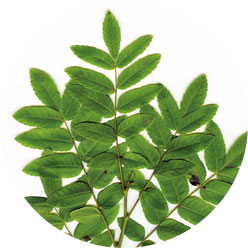
Northern Californian walnut – Part of our Plant Heritage National Collection of the walnut family, Juglandaceae, examples of the northern Californian walnut are some of many new plantings of representatives of the family, as we continue to strengthen the collection.

In early spring, our Magnolia species are some of the stars of the show with their spectacular flowers. The diminutive Star magnolia, M. stellata, is among the first, its white flowers standing out on leafless branches in March. Like many common garden plants, it is threatened in its native range, which itself is small and where habitat quality is unfortunately decreasing.
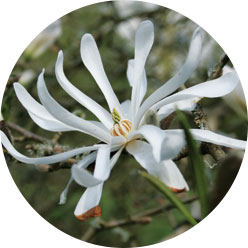
Star magnolia – The petals and sepals of magnolia flowers are undifferentiated and are referred to as tepals.

An even more common tree that is under threat is the so called common horse chestnut, Aesculus hippocastanum. It is native to parts of the Balkans, though it has gone extinct in parts of its range. It is unfortunately impacted in cultivation also by the presence of multiple pathogens, notably a leaf miner moth that limits its photosynthetic capacity and gives the impression of an autumn come early, when in fact parts of their leaves are being consumed. In spring, however, its abundant candle-like flowers are a real highlight, following the leaves that emerge earlier than many other large trees.
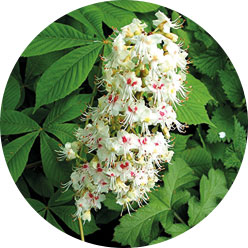
Horse chestnut – It’s always worth getting up close and personal with the flowers of the horse chestnut. The base of the petals have a yellow blotch which turns red once they have been pollinated. A handy indicator for bees and other potential pollinators, who know to avoid the red ones.
Discover more about Westonbirt’s rare trees and where you can find them with 'The little book of disappearing trees'. This pocket sized book takes you through 40 of the world’s disappearing trees, the threats they face and how we can help to protect them – funded by the Heritage Lottery Fund and available for free from the Welcome Building.
